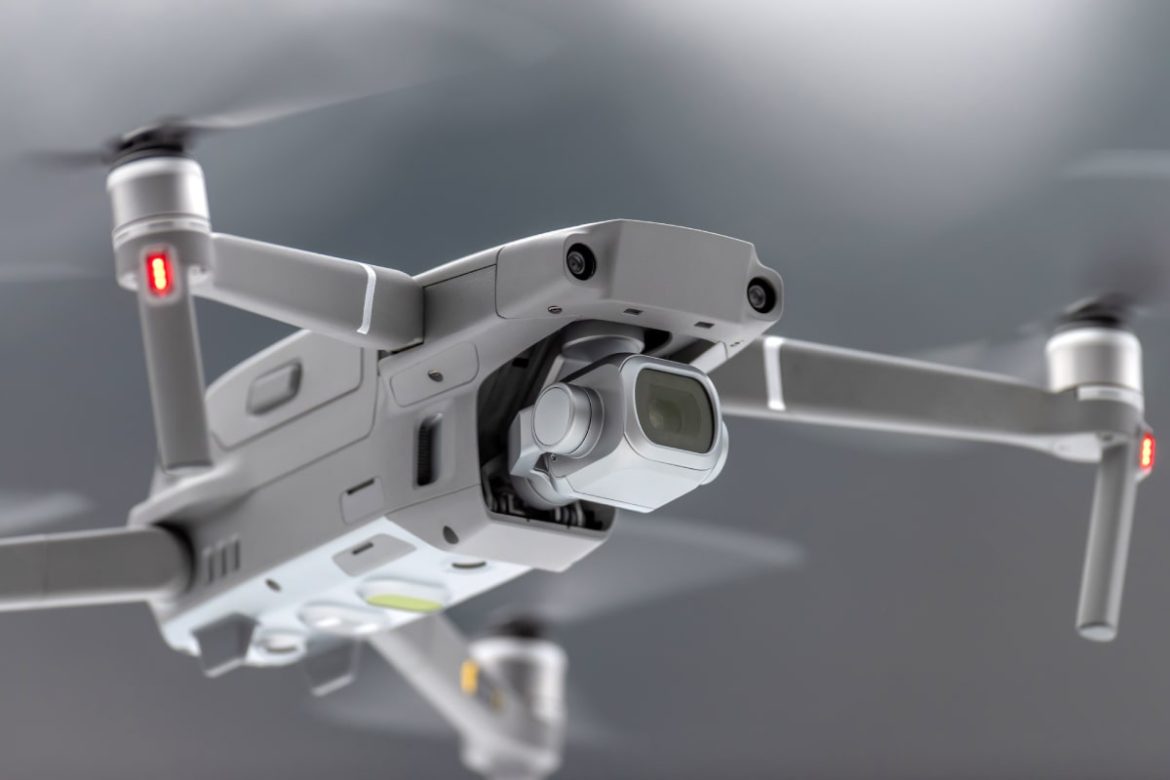Realtors and real estate agencies may now use drones to photograph houses and areas as a result of technological advancements. Real estate drone services are an excellent choice for people interested in marketing their houses or properties through photos. Drone photography in real estate has grown in popularity in recent years among industry experts. Figures show that 44% of commercial real estate agents use drones to sell their properties. Using drones to photograph houses has several advantages.
Drones can give a more detailed view of a whole area and display a property from all aspects. With these benefits, agents may now save time and get higher-quality photographs for their listed houses. In this article, we’ll discuss the critical role drones play in real estate marketing.
Table of Contents
What Is Drone Photography?
The term “drone photography” refers to the practice of using a remote-controlled or self-piloted unmanned aerial vehicle (UAV) to take still photographs and videos. Drone photography enables capturing photographs and audio/videos that would be impossible for human photographers and filmmakers.
Aerial photography often allows first-person view (FPV) that would be otherwise unattainable. The joy of finding new vistas is at the heart of drone photography. If you’re an accomplished photographer, drones can introduce you to a whole new universe of opportunities. If you’re new to photography, drones are an excellent way to get started. Just be patient with the process of learning and enjoy the breathtaking views your drone can record.
Advantages of Drones in the Property Market
Numerous automation solutions have been born as a result of new technology, emphasizing the purpose and critical relevance of innovation in today’s environment. Drone technology has had a significant impact on the operation and advancement of the real estate business due to its helpful and redemptive character.
The purpose of real estate marketing is to truly showcase the property. While still photographs and hand-held movies are also beneficial, they cannot compare to the footage captured by real estate drones.
Real estate drone photography helps you to showcase the property land by flying above the house and displaying a perspective that other means just cannot. There are several advantages to utilizing drones for real estate photography. With these benefits, realtors may now save time and get higher-quality photographs for their listed houses for sale.
Take dynamic and creative images via Real estate drone photography
The tremendous advantage brought by drone technology in the real estate sector is its potential to gather unique and dynamic visual material. UAVs’ mobility enables them to observe and collect aerial imagery. Modern real estate marketing relies on cutting-edge material generated by smart sensors and high-quality drone cameras.
Make advanced listings
One of the advantages of airborne drone photography is its portability and adaptability. Additionally, drone photography and visual material may pique the attention and curiosity of a wide variety of people. Realtors can take advantage of this to increase their consumer base. UAVs serve as an effective marketing tool for real estate listings, highlighting aspects of the properties that would not have been seen without the use of drones.
Describe property characteristics
With UAVs as a backbone, the possibilities for success, especially in the real estate sector, are almost endless. Drones do this by capturing photographs from numerous perspectives and shooting in a variety of formats, as well as having a vast range of image settings ingrained in them.
Their movement, particularly in isolated places, augments the aerial footage obtained by drones, revealing and illuminating several characteristics and features of properties that were previously hidden.
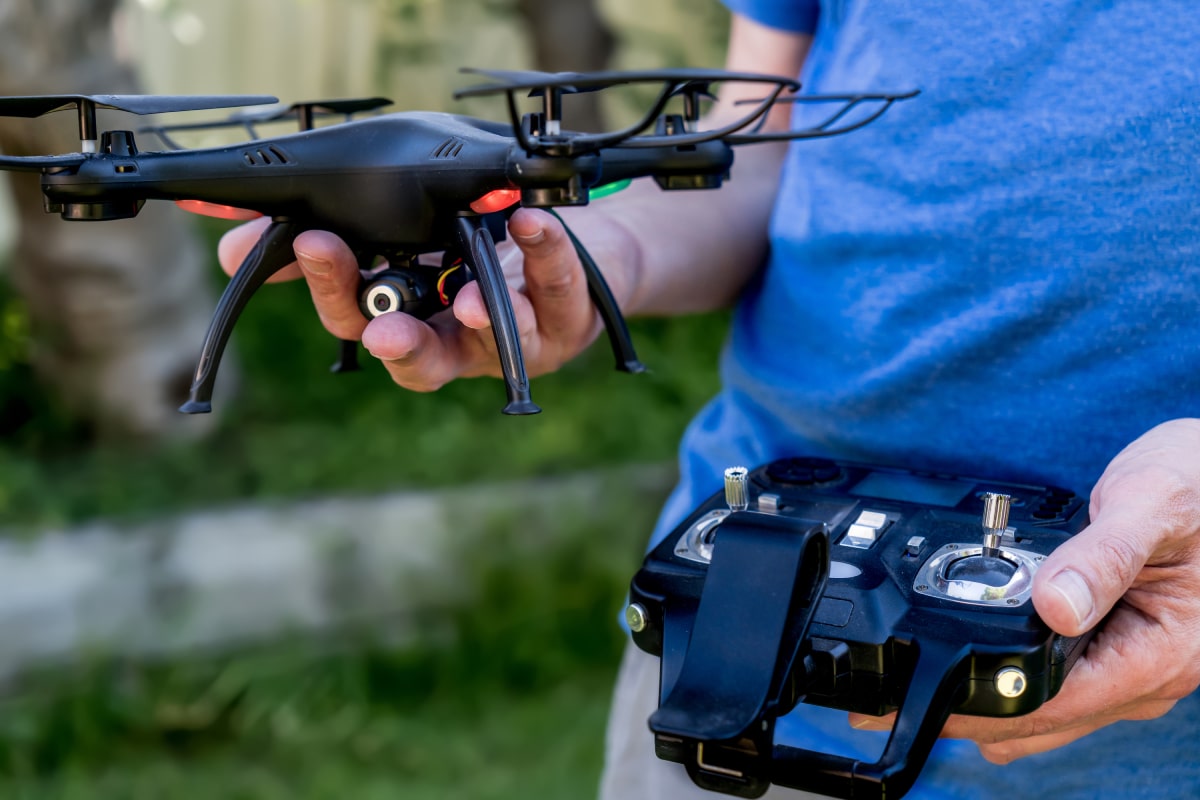
Create virtual tours
A virtual tour is one method to stay on top of the real estate market. This increases the customers’ level of participation. Due to their aerial imaging and mapping capabilities, UAVs enable customers to have a sufficient understanding of the listings’ surroundings to make informed selections.
Save time and money
Drones, in general, have elevated and increased operational quality, as well as the ability to save time, energy, and money. One of the most compelling reasons to use drones for real estate photography and marketing is their speed and quality, but more importantly, their cost-effectiveness. Drones have the potential to significantly reduce the costs of production and operation.
Stand out amongst the competitors
Drones have the potential to progressively boost real estate business and performance. Numerous chances for innovative aerial drone photography, inventive virtual tours, elevated drone photographs, 3D models, mapping, and UAV information processing assist real estate agencies in outwitting and surpassing their rivals.
Property land
There are many critical aspects to the usage of drone photography in the real estate business. Land inspection, aerial surveillance, drone mapping, marketing, and creative material are just a few of them that are made easier by drone technology. Drones’ quickness and agility make it simple to maneuver around isolated areas, which is helpful in the real estate industry. Furthermore, it allows for the viewing of property land and listings for more in-depth surveying.
Embarking on Drone Photography for Real Estate
To start working with UAVs, you need some preparations. Since there are different regulations regarding using drones for commercial purposes around the world, this should be your starting point.
Checking out the regulations
Each country sets its rules on the commercial flying of drones . These can be separated into three categories: license for piloting, drone registration, and flying regulations. We are going to review the USA laws on these subjects, elaborated in Part107 of FAA rules for Small Unmanned Aircraft Systems:
Remote Pilot certificate
According to subpart C of Part 107, to be eligible for a remote pilot certificate with a small UAS rating, a person must:
- Be at least 16 years old.
- Be able to read, speak, write, and understand English.
- Have the necessary physical and mental health for flying a drone.
- Show aeronautical knowledge by passing an initial test covering the following areas:
- Applicable regulations relating to small unmanned aircraft system rating privileges, limitations, and flight operation;
- Airspace classification, operating requirements, and flight restrictions affecting small unmanned aircraft operation;
- Aviation weather sources and effects of weather on small unmanned aircraft performance;
- Small unmanned aircraft loading;
- Emergency procedures;
- Crew resource management;
- Radio communication procedures
- Determining the performance of the small unmanned aircraft;
- Physiological effects of drugs and alcohol;
- Aeronautical decision-making and judgment;
- Airport operations;
- Maintenance and preflight inspection procedures;
- Operation at night.
As you can see, preparation is required before taking the test. There are online courses that you can benefit from, and it’ll probably take 2-3 weeks to become ready. Prior to the test, you must create a profile through Integrated Airman Certification and Rating Application (IACRA) and get your FAA Tracking Number. Afterward, you can schedule your test; it costs $96 if you take it at a PSI testing center. The test consists of 60 multiple-choice questions, and you must get 70% or higher to become eligible for the pilot certificate application.
After you pass the aeronautical knowledge test, you can apply for the certificate online . You’ll receive a temporary one while you wait for your official card to arrive through mail within 6-8 weeks. You must have the card with you when operating your drone. Also, you are obligated to complete online recurrent training every two years.
Drone Registration
all UAVs used for commercial purposes must be registered by FAA; it costs only $5 to register your drone. Keep in mind that even if your UAV weighs under 55 Ibs (250 g), since you are using it commercially, it must be registered. You should mark your drone with the registration number.
Beware that from September 16, 2023, all drone pilots must operate it according to the remote ID rule for pilots. That will enable third parties to locate the drone and check its credentials.
Flying Regulations
There are multiple rules guiding your piloting. Remember that these are FAA regulations, and there may be state and local ones that put additional restrictions on the flying drone. Therefore, before using your drone, check all the applicable regulations.
Here are some of the federal rules applicable to drone photography for real estate:
- You must check the small unmanned aircraft system to see whether it is prepared for safe operation.
- While operating your drone, you must fly it carefully to avoid endangering the life or property of another; and you mustn’t allow an object to be dropped, creating danger to persons or property.
- If you are using your drone at night, it must have anti-collision lighting visible for at least 3 statute miles and a flash rate sufficient to avoid a collision.
- The ground speed of your drone can not exceed 87 knots (100 miles per hour)
- The altitude of your drone must be under 400 feet.
- The remote pilot must have the drone in the visual line of sight throughout the entire flight.
- You cannot fly your drone in a way that intervenes with any airport, heliport, or seaplane base. Also, you can’t operate in Class B, Class C, or Class D airspace or within the boundaries of the surface area of Class E airspace designated for an airport.
- You can’t operate your drone in restricted or prohibited areas.
Choosing a drone
It can be confusing to decide on the drone you want to buy. Looking at the market, there are multiple options, and it can be challenging to pick the one that fits. The first choice would be to go for a camera drone or one without a camera. With the second one, you have more liberty in choosing the camera.
Regarding the camera drones, some features are essential:
Image quality:
As you expand your budget, you can get higher MP for the camera. Most drones offer fixed aperture; if you prefer having control over the exposure, you can go for models offering ranging apertures, like DJI Mavic 3 Classic or Autel Robotics EVO Lite+.
Video recording quality:
Drones can be used for aerial tours of the estate, so you’ll need a steady quality for recording.
Stability:
For still shots, you’ll need a drone resistant to the wind; this way, you’ll get sharp outcomes.
Battery:
Most drones’ battery life is around 30 minutes. So, it is best to invest in spare batteries to make sure you’ll have enough time to capture all the necessary angles.
Size:
Real estate photographers already have many gears and gadgets to carry with them. Therefore, it is easier to have a compact drone that takes the least possible space. Foldable drones meet this need effectively.
Nevertheless, we have gathered the top-recommended camera drones for real estate photography that suit different budgets.
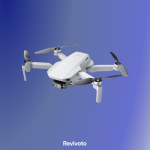
Features?
Light and foldable - 249g
4K HD video recording
12 MP effective still resolution
Built-in photo optimization
Automatic Exposure Bracketing
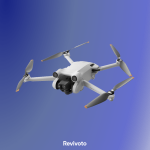
Features?
4K HDR video recording
Tri-directional obstacle sensing
Light and foldable - 249g
True vertical shooting
Focus track
48MP RAW photos
Automatic Exposure Bracketing
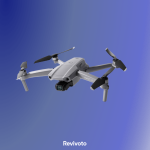
Features?
4K/60 fps video recording
12 MP and 48 MP RAW photos
Tri-dimensional obstacle sensing
Automatic Exposure Bracketing in 12 MP
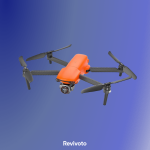
Features?
6K video recording
20 MP photos
Aperture f/2.8 to f/11
Three-axis mechanical stabilization
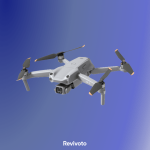
Features?
5.4K video recording
Obstacle sensing in 4 direction
20MP RAW photos
Automatic Exposure Bracketing
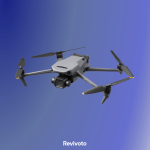
Features?
46 minutes battery life
20 MP RAW photos
Aperture f/2.8 to f/11
Automatic Exposure Bracketing
Omnidirectional binocular vision
Using Camera Drones for Real Estate Photography
Let’s face it: it is not what any of us is used to; even professional photographers will have to adjust to the angle and perspective provided by the drone camera. The following are the essential tips for drone photography in real estate.
Read your drone’s manual attentively
Each model has its features, so you should be fully acquainted with your gadget. You can check the available flight modes and features. Keep in mind that you are responsible for any damage caused by your drone; therefore, for safe operation, you’ll need to have full control over your device.
Get liability insurance
This technology is new and expanding; let’s avoid any probable lawsuits by getting liability coverage for property damage or bodily injuries. There are even flexible options based on the hours you use your drone.
Prepare a pre-shoot checklist
Do-overs are expensive and time-consuming, so make a list to avoid hindrances. We recommend the following for your checklist:
- Checking the regulation: There are different levels of rules governing drone flights; you may even need additional registration. So, look up local and state laws in advance. You should also check the limitation on flying zones.
- Packing necessary gear: Make a list of all the gadgets you will need or might need and pack them before the shooting day.
- Checking the weather: You may be able to shoot the interior on a rainy day, but drone photography is dependent on optimal weather conditions.
- Inspecting your drone: Before shooting, check all the parts of your UAV, including the propellers, motor, and controls; Make sure they all function properly.
Pack the essential accessories
Working with drones, you’ll need some spare gadgets with you on shooting day:
- Batteries: Because of their short battery life, always bring extra batteries with you.
- SD cards: Capturing photos in RAW and recording high-quality videos will fill your drone’s memory in a blink of an eye. That is why you’ll need spare memory cards.
- Propellers: Drones are prone to damage to their propellers due to the high chance of entangling a branch or barrier. So, pack additional propellers with you to avoid reshooting.
Check the weather and pick your time of the day
Clear and calm days work best for drone photography. Choose when to start shooting with your drone, considering the angle you want to shoot. This way, you can avoid reflections and sharp shadows.
Prepare the estate
The scene captured with a drone is different from regular shots, so you’ll need additional cleaning and staging. Since the roof will be shown in the shot, it’ll need proper cleaning. All the outdoor features, including the pool, lawn, patio furniture, and even parked cars must be spotless and staged in an eye-catching manner.
Inspect the estate and its surroundings
You’ll need to decide on the features and elements you want to focus on: If there are attractive amenities in the neighborhood or if the property has an ocean view. Knowing this will assist you in picking the best time for the shoot, and you can avoid traffic caused by vehicles or people walking or waiting around.
This is when you decide on prime angles for shooting, and the height you’ll need for capturing the unique features.
Use basic photography rules
Just because you are up in the sky does not mean the photography rules don’t apply. Take advantage of these rules, like the rule of thirds or the golden ratio. Also, practice with your drone to become an expert in forming the best composition and finding the finest angle.
Remember to shoot in RAW format to leave room for adjustment in the editing phase.
To find out more about basic photography rules, read this blog:
Take advantage of Burst mode and AEB
It is hard to predict how each shot will turn out, so take multiple shots to have more liberty in post-production. Use the burst mode for taking the shots. If your drone offers Automatic Exposure Bracketing, apply it for having shots with different exposures.
Make the most out of editing
With camera drones, you’ll have less control over the shooting settings; that’s why editing is essential. You can deal with the post-production process or benefit from online services to have an exquisite outcome. At Revivoto, we offer the following for your drone shots under our Image Enhancement service:
- Exposure correction: Drone photography deals with different light settings. Here, we’ll fix the white balance and light exposure.
- Color adjustment: Bringing colors to life by correcting their tone can turn a dull image into an eye-catching picture.
- Straitening the Lines: It is likely to capture distortion while shooting real estate with a drone, especially when using wide-angle lenses; fixing the lines’ alignment happens in post-production.
- Noise reduction: Having a blurry photo for listing is worse than having none.
- HDR processing: Due to the lighting challenges of drone photography, using the AEB feature on your camera is vital. We can merge your shots professionally to get a well-lit picture.
- Enhancing the water: Occasionally, drone shots have pools captured, and a vivid blue can turn the eyes to themselves.
- Removing shadows: Lighting is a challenge for drone photography; it can provide magnificent sceneries accompanied by huge shadows. It is only with editing that you can eliminate them thoroughly.
- Removing the blemishes: If any dust spots are captured in your shot, we’ll eliminate them in the enhancement process.
- Turning the lights on: if you have taken an aerial shot at dusk, we can turn the property’s lights on to add more glamour.
Remember that editing is inevitable when it comes to drone real estate photography, and it makes up for the limited control you have over the shooting. So, remember to budget for it in advance.
To order image enhancement at an unbeatable price click below!
Conclusion
In this article, we discuss drone photography in real estate. Drones and Unmanned Aerial Vehicles (UAVs) are used to raise the bar for real estate organizations’ experiences and their customers. Real estate marketing is a profession in which innovation and capitalizing are necessary. With real estate drone photography, marketers can guarantee that their clients’ properties are shown to their greatest advantage.
Utilize drones if you’re a real estate marketer seeking to update your company to keep up with shifting buyer demographics or if you’re looking to highlight houses and property lands in a manner that handheld cameras cannot.


